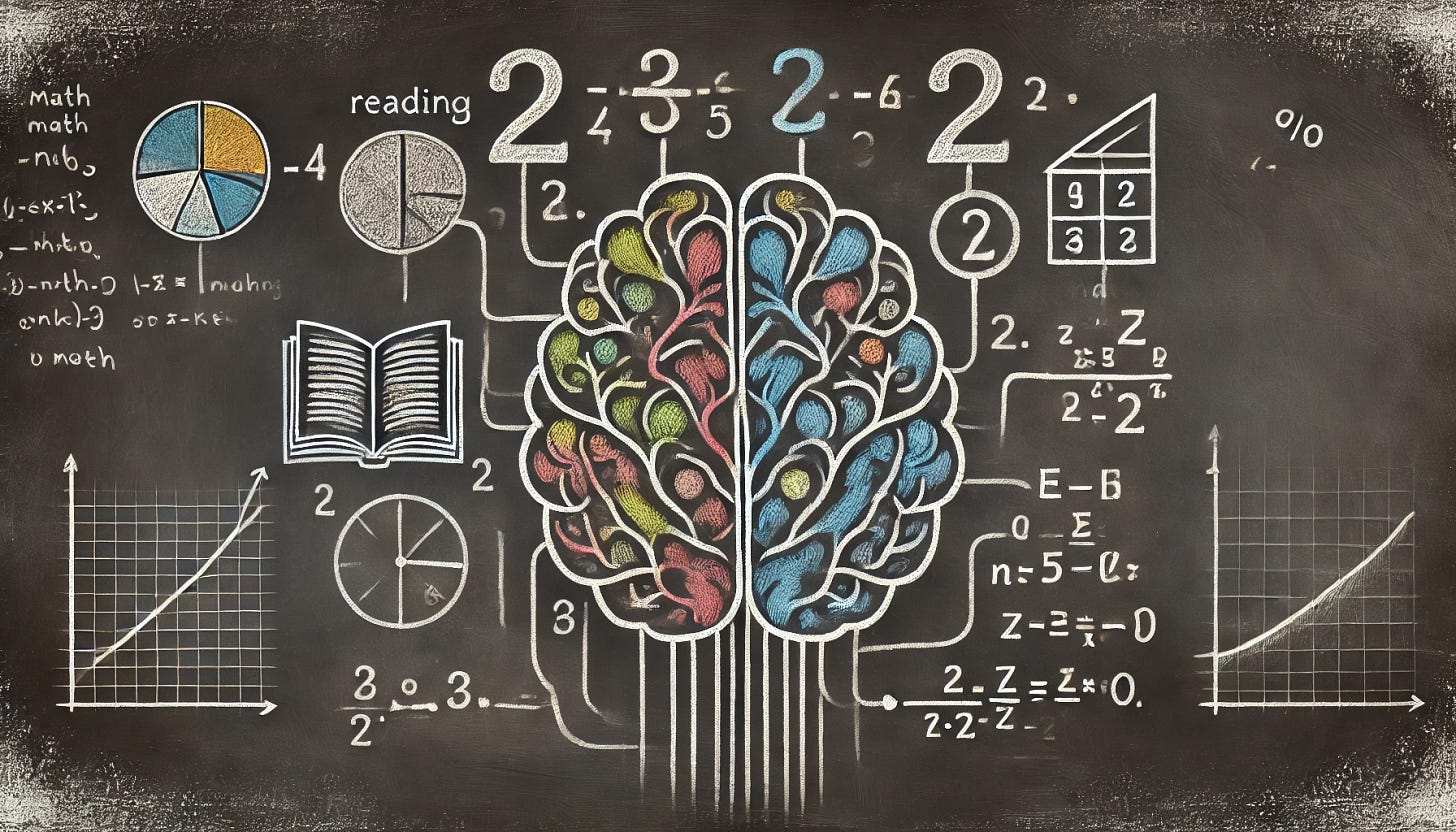The Surprising Brain Link Between Reading and Math
Reading and math may seem like different skills, but they share a common foundation in executive function.
Introduction:
We often think of reading and math as separate academic abilities—one focused on words, the other on numbers. However, research suggests they share a common cognitive foundation: executive function. Executive processes, such as working memory and cognitive flexibility, help us switch between ideas, focus on tasks, and manage complex information. But how does the brain support these shared skills? This study used fMRI to investigate which brain regions contribute to both reading and math ability, offering new insights into why difficulties in one area often overlap with the other.
What is this study about?
Wang et al. (2020) explored the neural basis of executive processes in reading and math by examining the brain activity of 231 adolescents during three tasks: a reading comprehension task, a numerical estimation task, and a working memory task (measuring executive function). Using fMRI and meta-analytic tools, the researchers aimed to identify domain-general brain regions that support both reading and math, independent of lower-level sensory or perceptual processes.
Key Findings:
Common Brain Regions for Reading and Math: Both skills relied on overlapping areas in the left posterior prefrontal cortex, including the inferior frontal junction (IFJ) and ventrolateral prefrontal cortex (VLPFC)—regions known for executive control.
Executive Function as a Shared Foundation: These prefrontal areas help manage task-relevant information, suggesting that executive processes like working memory and cognitive control support both reading comprehension and mathematical reasoning.
No Role for Mid-Dorsolateral Prefrontal Cortex: Unlike some prior theories, this study did not find strong evidence for mid-DLPFC involvement, suggesting that other brain areas may take the lead in integrating reading and math skills.
Implications for Learning Disabilities: Weaknesses in these shared executive regions could help explain why reading and math difficulties frequently co-occur in students.
Practical Insights for Educators:
Strengthen Working Memory Across Subjects: Since executive function plays a key role in both reading and math, activities like verbal reasoning games, number puzzles, and structured problem-solving tasks can improve students’ cognitive flexibility and working memory.
Teach Self-Regulation Skills: Encouraging students to monitor their own thinking—through strategies like metacognitive questioning and self-explanation—can enhance their ability to manage both reading comprehension and numerical reasoning.
Use Cross-Disciplinary Learning Approaches: Integrating literacy into math instruction (e.g., word problems, storytelling in math) and math into reading tasks (e.g., pattern recognition in texts) can help reinforce the shared executive processes involved in both domains.
Conclusion:
This study highlights that reading and math are not as separate as they seem—both rely on executive processes controlled by shared brain regions in the prefrontal cortex. Strengthening executive function through targeted interventions could be a game-changer for students who struggle in either domain, providing a foundation for success across subjects.
Reference:
Wang, K., Banich, M. T., Reineberg, A. E., Leopold, D. R., Willcutt, E. G., Cutting, L. E., Del Tufo, S. N., Thompson, L. A., Opfer, J., Kanayet, F. J., Lu, Z., & Petrill, S. A. (2020). Left posterior prefrontal regions support domain-general executive processes needed for both reading and math. Journal of Neuropsychology, 14(4), 467-495. https://doi.org/10.1111/jnp.12201




